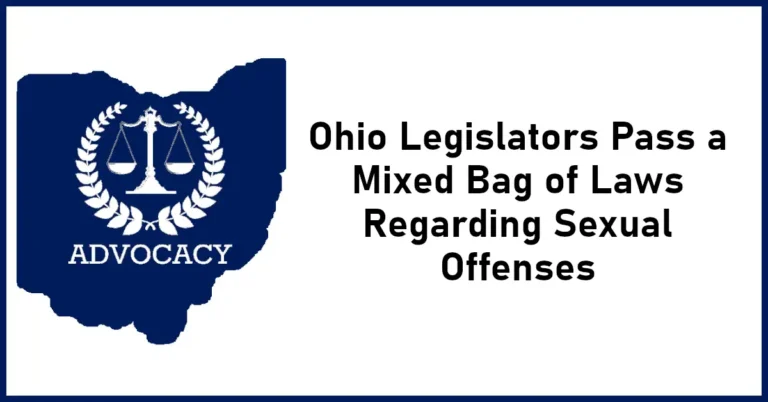by Barb Wright
February 2021
After five years of hard work and cajoling, Families and Individuals for Reform (FAIR) convinced the Ohio General Assembly to pass a bill that allows certain “eligible offenders” to petition for modification or termination of the duty to register. It wasn’t easy (see “Lots of Hard Work, and Then a Christmas Miracle” in this issue), and it’s just the first step but a great start.
Petition for Modification or Termination to Register
Substitute House Bill 431, as amended, enacts new Section 2950.151 of the Ohio Revised Code. Section 2950.151 creates a new procedure for a person convicted of unlawful sexual conduct with a minor, or a similar offense from another state, to move the court for modification or termination of the duty to register if he or she meets the following criteria:
- The eligible offender must have been 18, 19 or 20 at the time he or she had sex with a minor 14 or 15 years old, and it was a first offense.
- The minor must have agreed to the sex, with no evidence of force, threat of force, or coercion.
The eligible offender was not in a position of authority over the minor. - The eligible offender was deemed “low risk” at sentencing and was sentenced to community control sanctions in lieu of prison.
- The eligible offender must have completed each and every community control sanction, with no new offenses.
The motion is framed as a request for the court to review the effectiveness of the offender’s participation in community control sanctions and to determine whether to modify or terminate the offender’s duty to register.
Tips to Prepare for a Successful Petition
The key to a successful petition is to demonstrate that you, as the eligible offender, have been rehabilitated to a sufficient degree that you do not pose a risk to society. The more you can do to prove your case, the better. If you can afford a new risk assessment (or psych-sexual evaluation), get one. If you can’t, use letters of reference and personal experience demonstrating that you were young and immature at the time of the offense but that now you are mature and responsible.
Don’t be afraid to make the argument that barriers to housing and employment and loss of family support have made it hard for you to be a contributing member of society. In the end, though, you need to demonstrate that you have overcome those obstacles and matured out of the offending behavior.
Proof of Successful Completion of a Sex Offender Therapy Program
One requirement of the motion is that you demonstrate that you have completed sex offender therapy certified by the Ohio Department of Rehabilitation and Corrections (ODRC). As I have found out the hard way, this may not be as simple as it sounds: not all programs are certified by ODRC. And since you initially had no control over what program you attended, this leaves you in a bind if your program was not accredited.
Here are your options:
- Obtain records from your therapy and use them to show that you have accomplished the spirit, if not the letter, of the requirement.
- Argue that the eligibility criteria take precedence over any other provisions in Section 2950.151. Since the eligibility criteria do not even mention therapy (just that you have completed community control sanctions), the “proof” required is simply boilerplate and not required for you to demonstrate rehabilitation.
- You can try to repeat your therapy with a program certified by ODRC, but enrollment generally requires a referral from the probation department. Instead, you can argue that therapy is not the preferred method of rehabilitation for low-risk individuals and may even be counter-productive.
Record Sealing – The Icing on the Cake
If/when you are successful in terminating your duty to register, you have the right to petition to have your record sealed. As a threshold issue, the court will:
- Determine if you have been relieved of your duty to register.
- Determine whether the applicant is an eligible offender under the provisions of Section 2953.32 and 2953.36 of the Revised Code, whether criminal proceedings are pending against the applicant, and whether the applicant has been rehabilitated to the court’s satisfaction.
- Consider the reasons against granting the application specified by the prosecutor in any objection to the application.
- Weigh the applicant’s interests in having the records pertaining to the conviction sealed against the government’s legitimate needs, if any, to maintain those records.
In addition, under HB 431, the court also must determine whether the offender has been rehabilitated to a satisfactory degree.
The court may consider all of the following in making its determination:
- Offender’s age
- Facts and circumstances of the offense
- Cessation or continuation of criminal behavior
- Offender’s education and employment history
- Other circumstances that may relate to the offender’s rehabilitation



